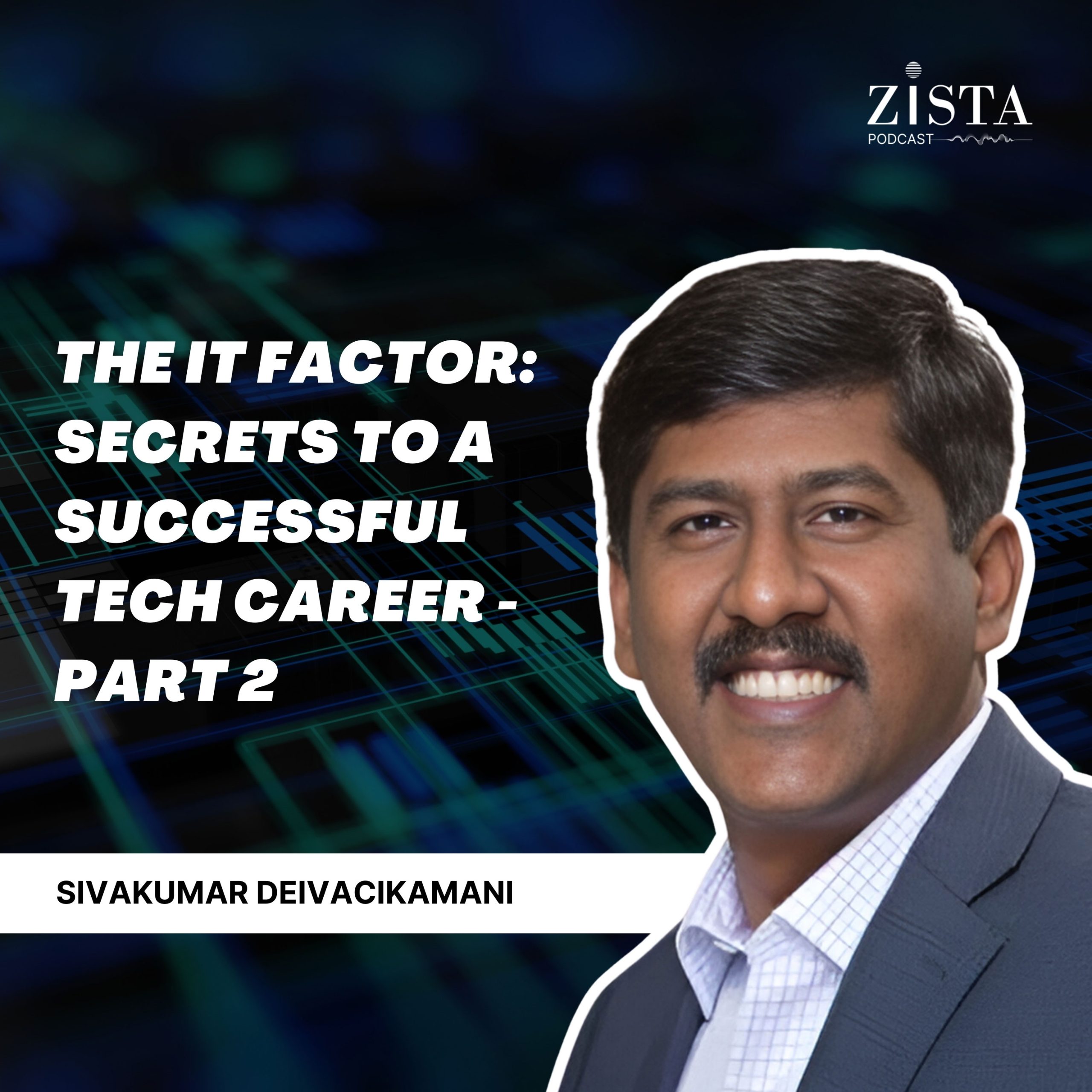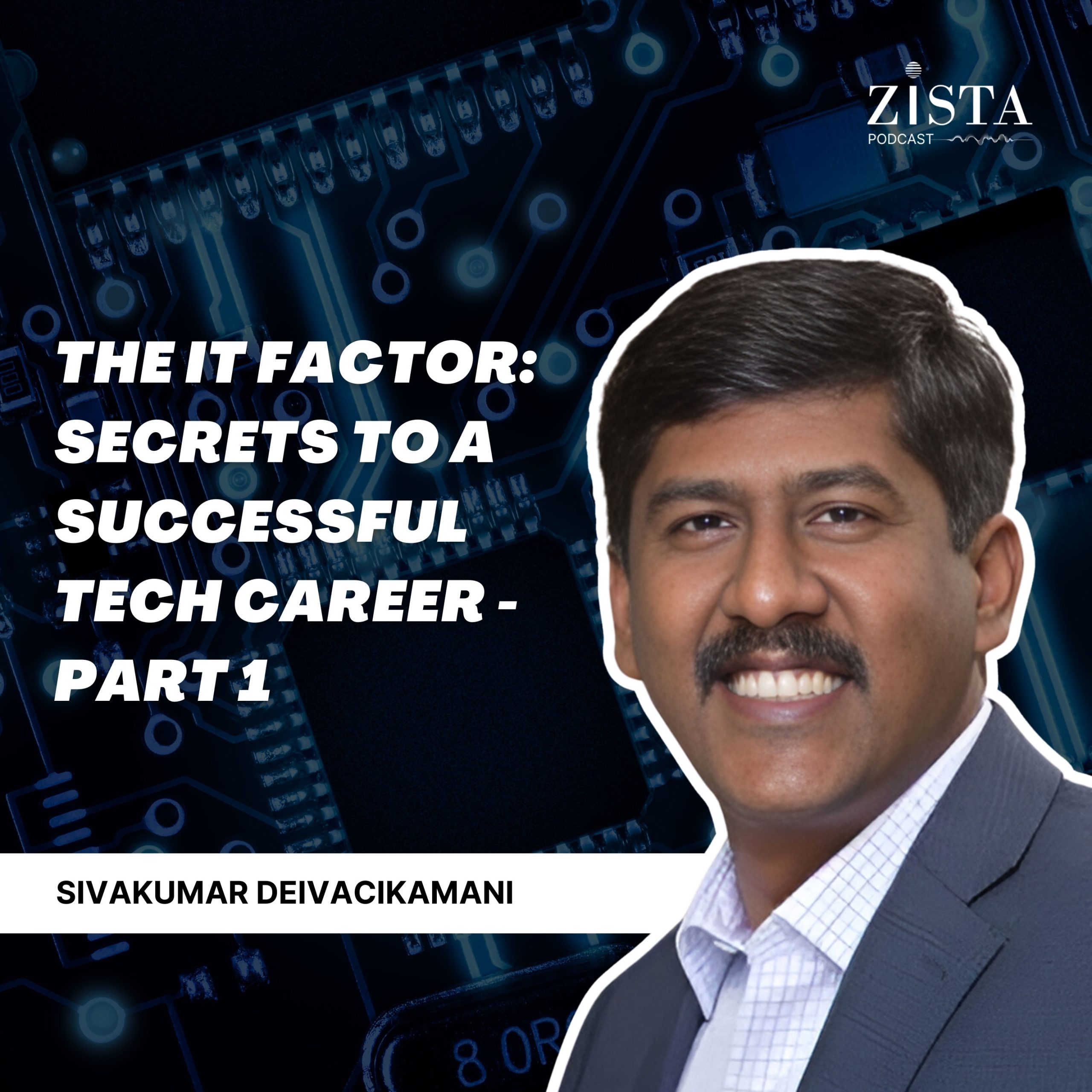Employees First: Building a people-centric work environment
Welcome to “Employees First: Building a People-Centric Work Environment” on The Zista Podcast, featuring Vikrant Kapur, Vice President, HR, APAC at Technicolor.
In this episode, we discuss Vikrant’s effective strategies for creating a workplace that truly values and empowers its people, boosting both productivity and innovation. He shares practical insights for advancing in HR and enhancing organizational culture.
Join us for this impactful conversation that offers essential guidance for creating a thriving, people-centric work environment.
Welcome to the latest episode of The Zista Podcast, titled “Employees First: Building a People-Centric Work Environment.” In this episode, we explore the essentials of creating a work culture that prioritizes employee well-being and fosters an environment ripe for productivity, creativity, innovation, and effective talent management.
Joining us is Vikrant Kapur, a seasoned HR veteran with 24 years of experience, currently serving as VP HR, APAC at Technicolor. Vikrant has honed his skills at prestigious firms like Genpact, Accenture, Conduent, and Better.com, bringing a wealth of knowledge and insight to the discussion.
Vikrant takes us through the defining moments of his career and shares the key strategies he’s adopted at Technicolor to nurture a workplace that truly centers on its people. This discussion will illuminate how a people-centric culture not only enhances employee engagement but also drives innovation and productivity across the organization.
We’ll explore practical steps your organization can take to facilitate open communication and idea sharing among different teams. Vikrant also provides invaluable advice for those looking to forge a rewarding career in HR, drawing from over two decades of industry experience.
Tune in to gain a wealth of knowledge that will help you develop a thriving, supportive workplace environment, where every team member can succeed.
- Focus on matching employees’ skills with suitable roles to ensure their professional growth and placement, both within and outside the organization.
- Create a people-centric culture by simplifying processes, promoting engagement, and encouraging continuous learning for a supportive work environment.
- Leaders should actively dismantle departmental silos to foster cross-functional collaboration and align priorities with organizational goals.
- HR professionals should identify key traits in talent, solve problems from a strategic perspective, and facilitate dialogues to resolve conflicts and enhance collaboration.
- Remove psychological barriers like fear of asking questions or failure through structured, coaching-oriented approaches starting with leadership.
- Develop and implement the EEL strategy – Experiences, Engagement, and Learning – to enhance HR efforts. Simplify everyday experiences for employees, foster engagement through interactive and collaborative activities, and prioritize continuous personal and professional development
Questions
Q1. What have been the pivotal moments in your career that led you to your current role as VP, HR, APAC at Technicolor?
A: Vikrant Kapur began his career 24 years ago, initially working in business before venturing into human resources. A crucial event in 2007, amid the financial crisis, marked a significant shift in his career path. He was managing a successful business initiative, which, due to the securities crisis, had to be discontinued. This situation involved the potential layoff of 35 talented team members, a decision he found challenging. At that time, he felt that the human resources support was lacking, which sparked his interest in HR. Vikrant took it upon himself to ensure these team members were placed in roles that suited their skills, either within the same conglomerate or elsewhere. This initiative became his first substantial HR endeavor, focusing on matching employee skills with appropriate opportunities through extensive collaboration with various partners.
Since then, Vikrant has been intentional about his career in HR, leading transformational roles across different organizations. He has revolutionized recruitment practices, established global shared services centers, and set up robust learning and development programs. His tenure at Better.com as the India People Head marked his first leadership role in HR within India, which later helped him transition to Technicolor. At Technicolor, he expanded his experience from managing HR in India to overseeing a global footprint, aligning his journey with broader international HR responsibilities.
Q2. Can you detail the innovative HR strategies and practices implemented at Better.com under your leadership?
A: Vikrant Kapur emphasizes that his tenure at Better.com was centered around building new capabilities within the HR department, supported by a robust team. Initially, they had a head of talent acquisition, but as they developed their HR operations and expanded into HR business partnering and learning and development, they were able to recruit like-minded individuals backed by a global team and a country head who prioritized talent. This setup enabled them to launch groundbreaking initiatives which led to recognition by Economic Times as one of the best places to work for women, and by Inc42 Magazine as one of the most successful startup offices in Southeast Asia.
Vikrant shares that their core philosophy was to simplify success for their employees and instil a sense of pride in the company’s achievements, fostering a workplace where employees felt valued not just for their output but for their contribution to the company culture. This was achieved by building a sense of camaraderie and creating engagement platforms across the workforce.
One significant change was their hiring practice; they stopped asking candidates about their previous salaries and offered them compensation at the minimum to mid-range for their new level at Better.com, regardless of their past pay. This approach significantly broadened their appeal to potential candidates.
They also restructured the organization to enhance continuous feedback and development, which involved adjusting spans and layers within the company. This restructuring provided growth opportunities for seasoned employees, offering them clear career paths for advancement or lateral movement, supported by extensive coaching and learning initiatives.
The recognition from Economic Times was unexpected and came from a survey among working women across the country. Women employed at Better.com had spoken highly of the company, leading to this recognition. Furthermore, they introduced several innovative policies, like equating adoption leave with maternity leave and expanding paternal leave, which modernized their approach to parental support. They also enhanced benefits for new mothers and made significant efforts to sensitize the organization to the needs of working parents. For instance, they carefully avoided scheduling calls with parents during the family-oriented hours of 6:00 PM to 9:00 PM. These thoughtful initiatives were well-received by employees and were a testament to the company’s commitment to creating a supportive and inclusive work environment.
Q3. How are you fostering a people-centric culture at Technicolor, and how does this approach impact talent engagement and acquisition?
A: Vikrant Kapur believes strongly that when talent feels connected and integral to a firm’s success, they not only feel inspired but also become advocates for the company. This perspective significantly shapes his approach to talent acquisition, emphasizing the importance of employee satisfaction and advocacy in attracting new talent.
In discussing how he fosters a people-centric culture, Vikrant highlights a back-to-basics philosophy. He insists that for a firm to deliver outstanding work to its clients, it must first create an environment that allows employees to excel. This involves dismantling outdated systems such as the Bell curve performance evaluations and tenure-based promotions, which he views as artificial impediments to genuine performance and potential. His focus is on enhancing performance by removing these obstacles, a responsibility he believes is crucial for leaders in any industry.
Vikrant has developed what he calls the EEL strategy—Experiences, Engagement, and Learning—to drive his HR efforts. This strategy starts with simplifying everyday experiences for employees, making tasks like applying for leave or attending calls as straightforward as possible. The second element, Engagement, involves building camaraderie through various interactive and collaborative activities, allowing employees to work closely and build relationships. The third component, Learning, emphasizes the importance of continuous personal and professional development.
Together, these elements help to electrify the talent ecosystem at the firm, unlocking potential and ensuring that employees not only achieve more but also enjoy their work. Vikrant stresses the importance of fun at work, believing that employees should look back on their time with the company with fondness, remembering achievements, leadership interactions, and engaging dialogues.
Additionally, Vikrant points out the critical role of removing psychological barriers that can hinder employee expression, such as the fear of asking questions or the fear of failure. He considers addressing these fears as the next significant challenge for HR leaders. It requires a structured, coaching-oriented approach that starts with the leadership team to foster a supportive, open, and people-centric culture. This approach, he believes, is essential for advancing HR practices and enhancing overall employee satisfaction and performance.
Q4. How can organizations facilitate a free exchange of ideas and dialogue across different departments?
A: Vikrant Kapur emphasizes that breaking down departmental silos is primarily a leadership responsibility. While systems and opportunities for dialogue can be established at the employee level, such as through social networking and communication platforms, the initiation and sustained effort to break silos must come from the top.
He reflects on a critical question he has pondered: Is there a trade-off between a department’s priorities and the broader aspirations of the organization? This dilemma often places a significant responsibility on HR leaders to foster dialogue among different department heads. When these conversations occur, Vikrant notes, they typically yield mature responses that pave the way for collaborative processes.
Such leadership engagement can lead to the implementation of mechanisms that promote cross-functional thinking, including brainstorming sessions and the introduction of design thinking principles. The ultimate goal of these efforts is to unlock the potential of the organization’s value chain. By aligning functions in a way that each contributes optimally to the next, the entire organization can more effectively create value.
Vikrant emphasizes that when leadership commits to this model, it sets the stage for an ecosystem where employees can freely exchange ideas, collaborate, and address real-world problems effectively. This approach not only enhances departmental interactions but also aligns with the strategic goals of the organization, creating a cohesive and innovative working environment.
Q5. What essential advice would you offer to those aspiring to pursue a career in HR?
A: Vikrant Kapur provides three fundamental pieces of advice for anyone looking to build a career in HR, emphasizing the role of HR as a catalyst for recognizing and nurturing talent. Firstly, he advises HR professionals to develop a keen eye for identifying three key traits in potential talent: passion, a bias for action, and the ability to apply oneself effectively. Whenever an HR professional encounters talent exhibiting any of these traits, they should focus on enhancing that trait while building supportive systems to develop the others. The primary role of HR, from an employee perspective, is to help individuals explore and realize their own potential by working closely with their leaders and supervisors.
Secondly, Vikrant highlights the unique position of HR professionals as problem solvers who possess a “ringside view” of the organization. This perspective allows them to see the bigger picture—a view often obscured to those deeply involved in the day-to-day operations. This strategic vantage point enables HR professionals to guide, coach, and counsel employees, helping them navigate conflicts, confusion, and collaboration challenges effectively.
Thirdly, he points to the importance of articulating future possibilities and navigating through organizational challenges. HR professionals should be adept at initiating dialogues and conversations that resolve conflicts and foster better collaboration, focusing on what’s next and the best possible trade-offs.
Together, these three areas—recognizing and supporting talent, solving problems from a strategic viewpoint, and facilitating constructive dialogue—form the cornerstone of a successful career in HR, according to Vikrant. These skills enable HR professionals to lead organizations through challenges and ensure a thriving, productive workplace environment.




